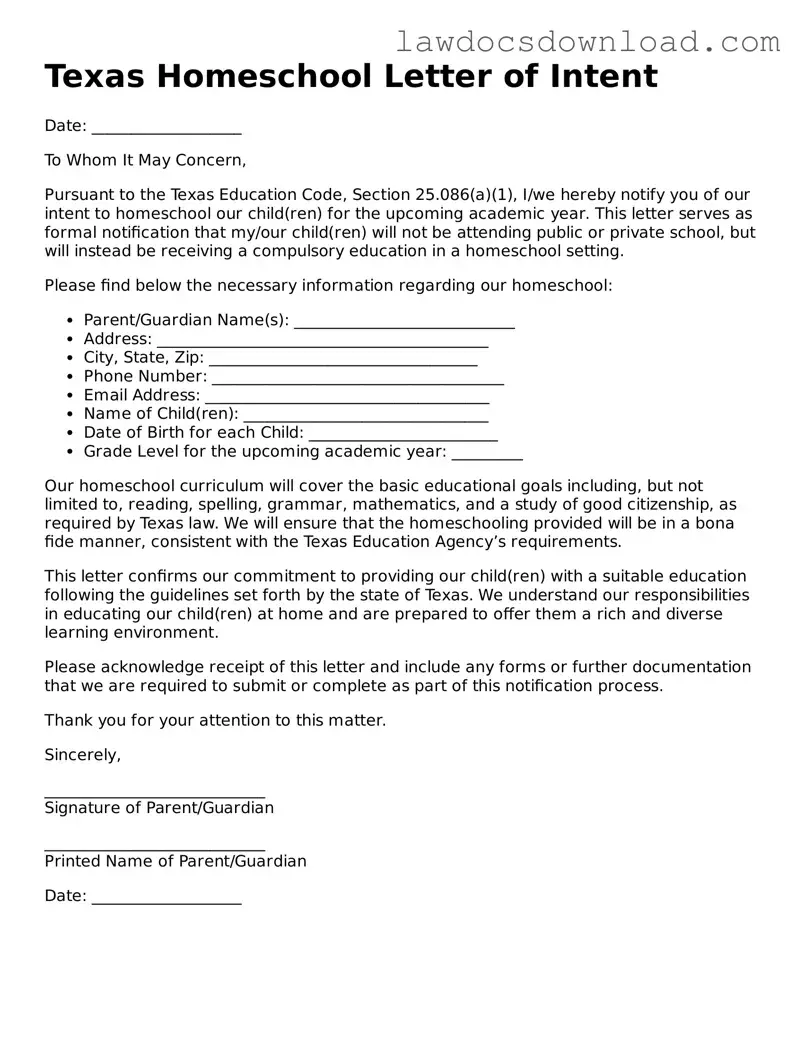Texas Homeschool Letter of Intent
Date: ___________________
To Whom It May Concern,
Pursuant to the Texas Education Code, Section 25.086(a)(1), I/we hereby notify you of our intent to homeschool our child(ren) for the upcoming academic year. This letter serves as formal notification that my/our child(ren) will not be attending public or private school, but will instead be receiving a compulsory education in a homeschool setting.
Please find below the necessary information regarding our homeschool:
- Parent/Guardian Name(s): ____________________________
- Address: __________________________________________
- City, State, Zip: __________________________________
- Phone Number: _____________________________________
- Email Address: ____________________________________
- Name of Child(ren): _______________________________
- Date of Birth for each Child: ________________________
- Grade Level for the upcoming academic year: _________
Our homeschool curriculum will cover the basic educational goals including, but not limited to, reading, spelling, grammar, mathematics, and a study of good citizenship, as required by Texas law. We will ensure that the homeschooling provided will be in a bona fide manner, consistent with the Texas Education Agency’s requirements.
This letter confirms our commitment to providing our child(ren) with a suitable education following the guidelines set forth by the state of Texas. We understand our responsibilities in educating our child(ren) at home and are prepared to offer them a rich and diverse learning environment.
Please acknowledge receipt of this letter and include any forms or further documentation that we are required to submit or complete as part of this notification process.
Thank you for your attention to this matter.
Sincerely,
____________________________
Signature of Parent/Guardian
____________________________
Printed Name of Parent/Guardian
Date: ___________________
